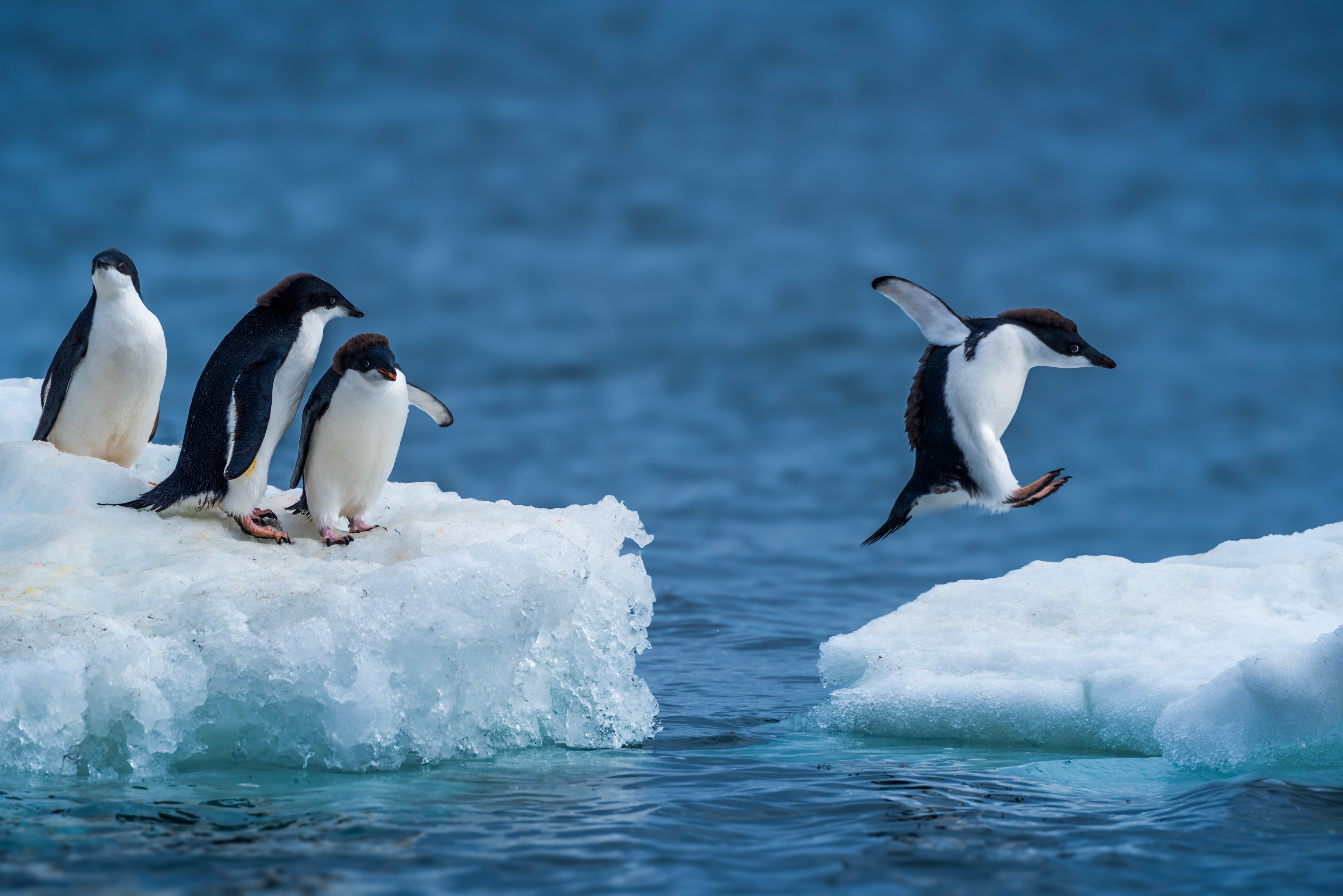CREATURES BUILT FOR SNOWY TERRAIN

Snow-covered landscapes, with their serene beauty and frigid temperatures, can be some of the harshest environments on Earth. Despite the extreme conditions, a surprising variety of animals thrive in snowy habitats—from the Arctic tundra to high mountain peaks and boreal forests. Among their many adaptations for survival, some animals have developed the remarkable ability to walk or run on snow without sinking. These adaptations involve a combination of specialized feet, fur, body mechanics, and behavior. Let’s explore some of the most fascinating animals that move gracefully across the snow, and how they’ve evolved to conquer the slippery, powdery terrain.
1. SNOWSHOE HARE
The snowshoe hare is perhaps the most iconic snow traveler. Native to North America, especially the boreal forests, this hare owes its name to its oversized hind feet. These large feet are covered in dense fur and spread wide when it hops, distributing the animal's weight like snowshoes and allowing it to stay on top of deep snow.
During winter, the snowshoe hare’s fur also changes from brown to white, providing excellent camouflage against the snow and helping it avoid predators like lynxes, foxes, and birds of prey. Its strong back legs and light frame allow it to move quickly, even in challenging terrain.
2. CANADA LYNX
Closely tied to the snowshoe hare in diet and habitat, the Canada lynx is a solitary feline that has adapted incredibly well to snowy environments. Its large, padded paws act like natural snowshoes, helping it move stealthily across soft snow while hunting. These paws are wide and fur-covered, reducing the pressure on the snow surface and giving it excellent traction.
The lynx is a master stalker and depends heavily on snowshoe hares for food. Its ability to chase and catch prey in deep snow gives it a major advantage, particularly over other predators less adapted to such conditions.
3. ARCTIC FOX
The Arctic fox is built for snow in every sense. Living in some of the coldest regions on the planet, it features thick fur that covers not only its body but also its feet, creating natural insulation and grip on icy surfaces. Its compact body, short ears, and fluffy tail help conserve heat.
More importantly, the Arctic fox’s paws are wide and heavily furred, enabling it to walk and even run on snow without sinking deeply. This gives it access to a wide range of prey, including rodents, birds, and fish. During the harshest winter months, the Arctic fox is known to follow polar bears to scavenge leftover food.
4. REINDEER
Caribou, known as reindeer in Eurasia, are large herd animals that migrate long distances across snowy tundra. Unlike many snow-adapted animals that rely on fur-covered feet, caribou have specially adapted hooves. In the winter, their hooves become hard and sharp, allowing them to dig through snow to reach lichens and other vegetation.
The broad surface area of the hoof also helps distribute the caribou’s weight when walking on snow. Some subspecies have shorter legs and stockier builds to conserve body heat and navigate snowy terrain more efficiently.
5. SNOW LEOPARD
Snow leopards, found in the mountain ranges of Central and South Asia, are among the most elusive and well-adapted big cats to cold, snowy habitats. These majestic animals possess wide, powerful paws that are lined with fur, acting like snowshoes to prevent them from sinking into deep snow.
Their strong hind legs allow them to leap long distances—up to 50 feet in a single bound—across cliffs and snowy gaps. Combined with their thick fur, long tail for balance, and snow-resistant pads, snow leopards are perfectly suited for hunting in mountainous, snow-covered regions.

6. PTARMIGAN
Not all snow-walking animals are mammals. The ptarmigan, a ground-dwelling bird found in Arctic and alpine areas, has developed feathered feet that function like snowshoes. These feathers increase the surface area of their feet and provide insulation, making it easier for them to walk on snow without sinking.
Ptarmigans also undergo seasonal color changes, turning white in winter and brown in summer. This camouflage helps protect them from predators while they forage on snow-covered ground for seeds and berries.
7. RED FOX
While red foxes are widely distributed across various climates, those living in northern regions have developed features to move efficiently in snow. Their paws are relatively large compared to body size and are covered in fur, allowing for decent support on snow.
Red foxes are also known for their hunting technique in snow: they use their acute hearing to detect rodents beneath the snow and then leap and dive headfirst to catch them. This behavior, often caught on wildlife cameras, is both functional and a testament to their agility on snowy ground.
8. WOLVERINE
The wolverine is a powerful and solitary predator that thrives in the boreal forests and tundras of the Northern Hemisphere. Though it resembles a small bear, it's more closely related to weasels and martens. Wolverines have large paws that are well-furred and spread out when they move, making them effective for snow travel.
They are known to cover enormous distances over snow-covered terrain in search of food, often scavenging or preying on animals weakened by winter. Their ability to move quickly across snow gives them an edge in the harsh, competitive environments they inhabit.
9. MOUNTAIN GOAT
High-altitude animals like the mountain goat aren’t strictly snow dwellers, but they are frequently found navigating snowy, icy slopes in North America’s Rocky Mountains. With cloven hooves and rubbery pads, mountain goats have excellent grip and balance.
While they may not "float" on snow like snowshoe hares, they can climb and run on snow-covered cliffs with astonishing agility. Their thick coats and incredible balance make them champions of snowy elevations.
10. POLAR BEAR
Polar bears, the giants of the Arctic, are superbly adapted to life on snow and ice. While their massive size might suggest they'd sink into snow, their large, wide paws help distribute their weight. The bottom of each paw has rough papillae that provide traction on slippery ice and snow.
Polar bears also use their paws to swim across icy waters, making them not just snow-walkers but powerful swimmers in the frozen North.
You may like post

FROM SACRIFICE TO RESURRECTION
Understanding Good Friday and Easter Sunday

HIDDEN INDIAN SITES WORTHY OF UNESCO
Exploring India’s Sites That Should Be on the UNESCO World Heritage List







